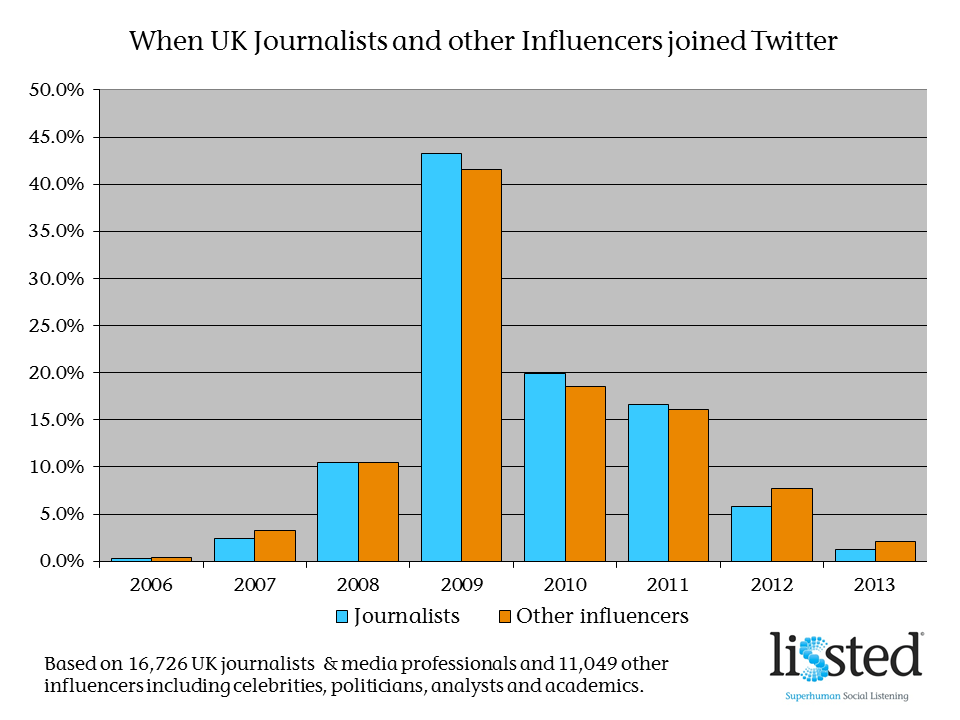Before writing this feature I thought it made sense to put out a few feelers on Twitter but I found, as I often have before, that it is far better to contact people directly for comment than expect decent feedback from Twitter. However, my experiences are not enough to make a fair judgement. Here are how some professionals in PR feel about it as a tool for engaging journalists, plus there are some hard stats that show how much journos rely on Twitter these days.
In favour
Ross Furlong, founder of digital PR agency Furlong PR, describes how he has got the attention of top journalists on Twitter: “Getting your head bitten off by a grumpy journalist over the phone goes with the PR territory, which is understandable as journalists are under pressure and can get stressed by too many PR calls when they are on deadline. But Twitter removes the peril from this phone roulette. By observing a journalist’s Twitter output, the astute PRO can now gauge the mood of their target writer (or influencer as we call them nowadays) prior to phoning and see what they’re talking about. Before Twitter, access to high profile ‘journalebrities’ like Sophie or Giles seemed as remote a prospect as an audience with the Queen. Yet in the last year I’ve had very pleasant exchanges with both Sophie and Giles on Twitter, simply by replying to one of their tweets.”
Dead against
But Simon Turton, owner of agency Opera PR, says he never uses Twitter for building relationships with journalists because: “I don’t believe that it would add any value to the journalists that I am in touch with on a regular basis.” He adds: “Call me a Luddite and thrash me with a typewriter ribbon, but what journalists and editors want are well-written, appropriately targeted press releases and images that they can easily get access to. With fewer and fewer journalists working – especially on regional titles – the last thing they want is to have to digest 140 characters about a possible news story, for them to have to get in touch to ask for more information. We should be making their lives easier and not bombarding them with trivia or twaddle.”
“I also think that with the recent cases of cyber-bullying that Twitter and other (anti-) social sites will be losing their appeal, especially for professional communicators. I am not anticipating the imminent demise of such sites, but given the recent reported suicides I am far less inclined to want to use such sites, personally or professionally."
Useful tips
Jeremy Walters, editor of online magazine What's New in Publishing and independent PR consultant, has experience of using Twitter as both a journalist and as a PRO. He has come to the conclusion that Twitter is used by PROs very effectively to reach out to Joe Public, but poorly to communicate with journalists. He concludes: “PROs are missing a trick.” Walters explains: “I love nothing more than a PRO taking the time to know my B2B publishing brand and to reach out to me on Twitter. Does it happen? Err, no. Email is still king. Phone a poor second. Twitter a pitiable sixth. For those few brands that have reached out to me on Twitter, the overall impression has been lasting and worthwhile. It’s a far more personable and engaging medium than email.”
Walters offers this advice if you wish to make the most of Twitter: “Twitter is not a means to an end, it’s just another communications channel. Whether it’s phone, email or social media, nothing beats a well-researched and thoughtful approach to a journalist. That applies to Twitter too.”
“As an aside, I received a @wnip retweet from one of the world’s biggest electronics companies. Excitedly I thanked them for the retweet and asked if I could interview them. I heard nothing, and seeing this brand on my followers list makes me blanche. Don’t ever, ever, make this mistake.”
The stats
Looking at how many journalists are using Twitter helps to highlight why PROs should perhaps make more effort to engage writers on this site. Social listening platform Lissted has analysed journalist activity on Twitter and has come up with key statistics based on a sample of 16,726 UK journalists and media professionals over an average time on Twitter of 1,479 days (approximately four years).
- There were 136.2 million status updates combined
- 78 per cent tweeted 1,000 times or more
- 74 per cent have a follower/following ratio of more than 1.

Discussing what this tells us about how journalists are taking to, and using, Twitter, Adam Parker, founder of Lissted says: "In the early days, the social media landscape mostly consisted of early adopters and more techy users who quickly got to grips with these new networks and got a head start building influence.
“After events like the Hudson Bay plane landing in January 2009 made the journalistic opportunity of Twitter abundantly clear, there was a rapid growth in the most connected members of society building online presence to mirror their offline roles.”
“This means the relationships PR professionals have with journalists can give them an edge over other disciplines, and social discovery can help them identify and engage with other influential voices outside the media more easily than ever."
Written by Daney Parker
PR Masterclass: The Intersection of PR and GEO
Join PRmoment for a Masterclass featuring 10 of the industry’s foremost experts. You will walk away with a clear, actionable strategy for adapting your content to an AI-first search environment.
Taking place on Wednesday 25th February in London, both virtual and in person tickets are available.
Early bird ticket sale ends Friday 9 January.
PR MasterclassIf you enjoyed this article, sign up for free to our twice weekly editorial alert.
We have six email alerts in total - covering ESG, internal comms, PR jobs and events. Enter your email address below to find out more:









